Metal profile
Also called a tile corner. It closes the gap between the wall and the countertop without using sealant. They look great in combination with a gray countertop, a stainless steel sink or a chrome faucet.
To install the profile, you must first install the kitchen, then secure the corner. Only then should you begin tiling the apron with ceramic tiles.
In addition to metal profiles, plastic corners are produced: they are more flexible, which allows you to mask the unevenness of the wall. But such products look cheap, so if you ordered an expensive kitchen, we recommend not to spoil its appearance with a budget solution.
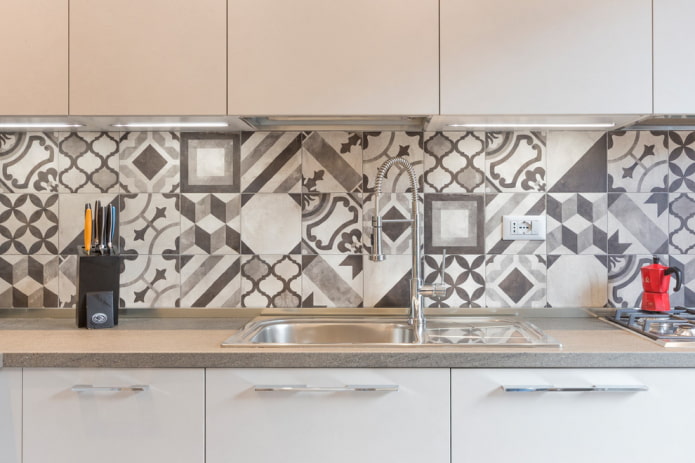
Stone skirting board
If you are making a countertop from natural or artificial stone, immediately order a skirting board, which will become a barrier between the wall and the work surface. This method will allow you to design the joint as aesthetically pleasing as possible, and you will not have to look for a skirting board in the color of the countertop.
This option cannot be called budget: the wall must be perfectly aligned, the kitchen unit must stand close to it, and the installation seam must be made as carefully as possible.
Which skirting board looks better – thin or high – is up to you to decide. The most elegant solution is considered to be a low apron on half the wall: it reliably protects its lower part from water and dirt. The surface is decorated with tiles, washable paint or decorative plaster on top.
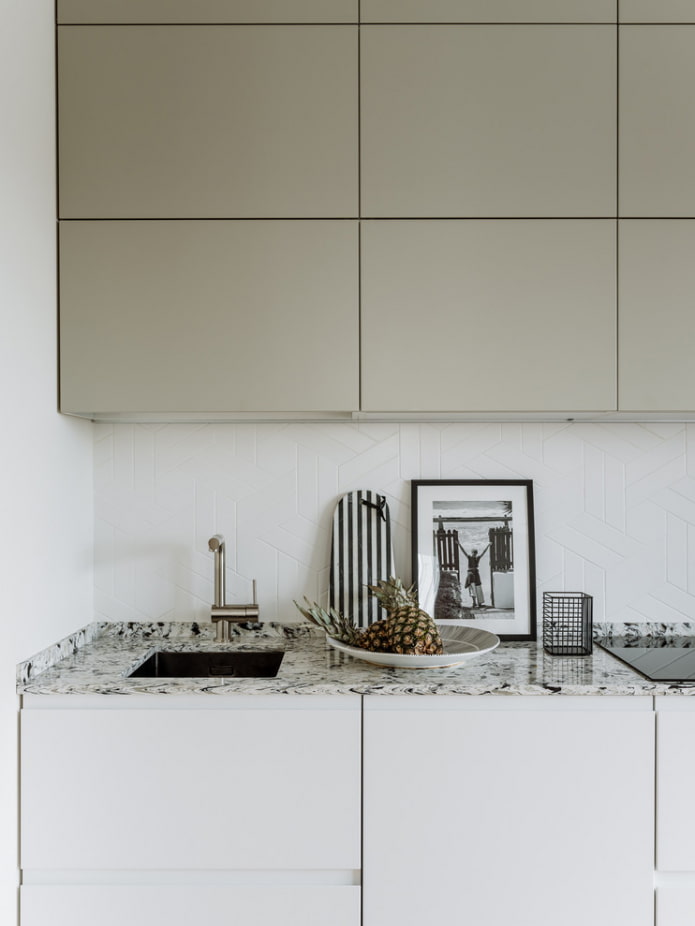
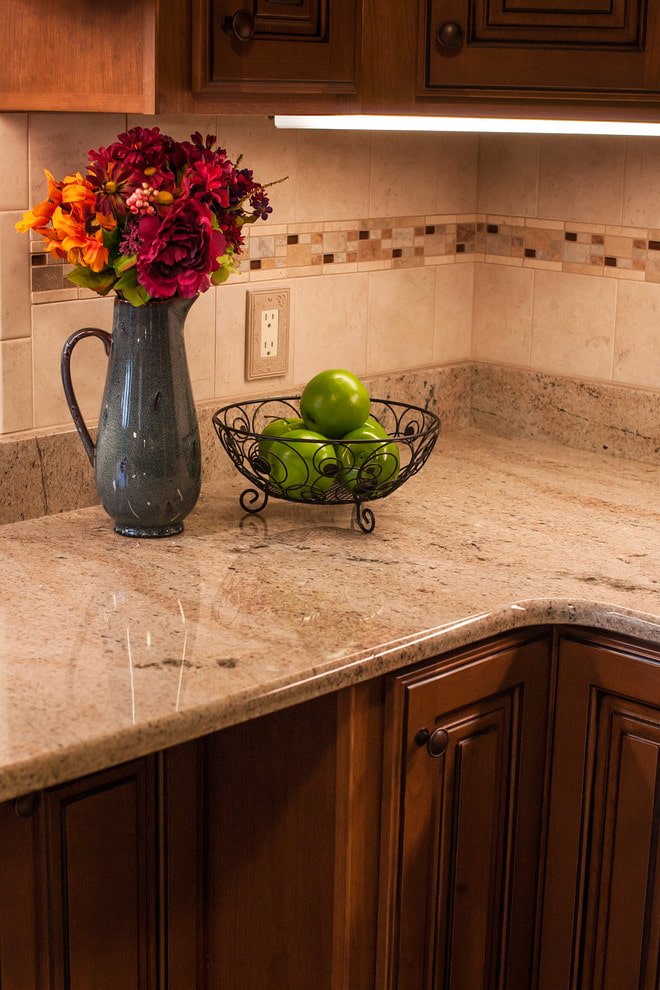
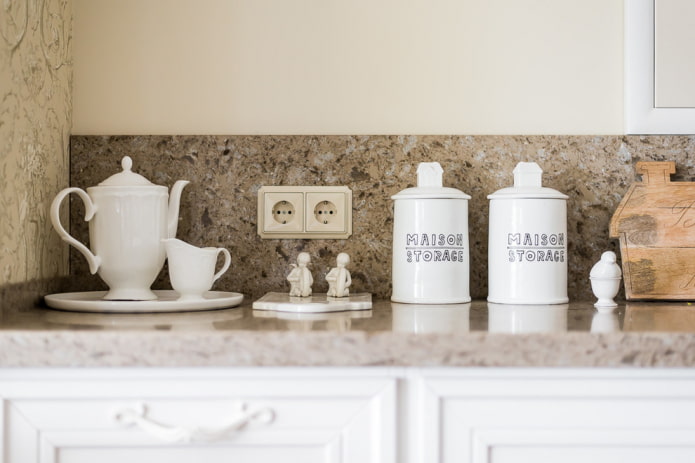
Ceramic border
An interesting solution for those who are not afraid to combine styles and various materials. A slightly protruding border from the same collection as the apron tile will become a barrier to moisture and beautifully decorate the joint with the countertop.
In order for the border to fit as closely as possible to the elements, it is necessary to use silicone sealant – transparent or in the color of the material.
The border will decorate the kitchen in the country and Provence styles, will be appropriate in eclecticism and even in a classic interior.
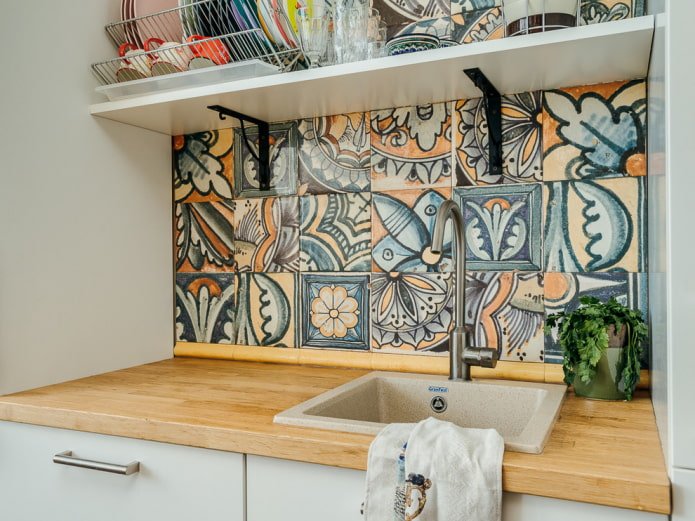
Wooden corner
The implementation of this idea entails some difficulties: in order for the corner to look attractive and not give the impression of a foreign object, it is important to choose a product in the same tone as the countertop. Therefore, if you choose a wooden work surface, add a corner to it when ordering a kitchen.
Today, the most popular profiles are in the form of a bar, that is, rectangular: they can be high or low. Also on sale are corners with a triangular cross-section, reminiscent of budget plastic profiles. Experts advise choosing a product with the most laconic design, since it is easier to care for.
To fix a wooden corner, you will need special glue. The composition must be applied to both ends and pressed tightly to the two surfaces.
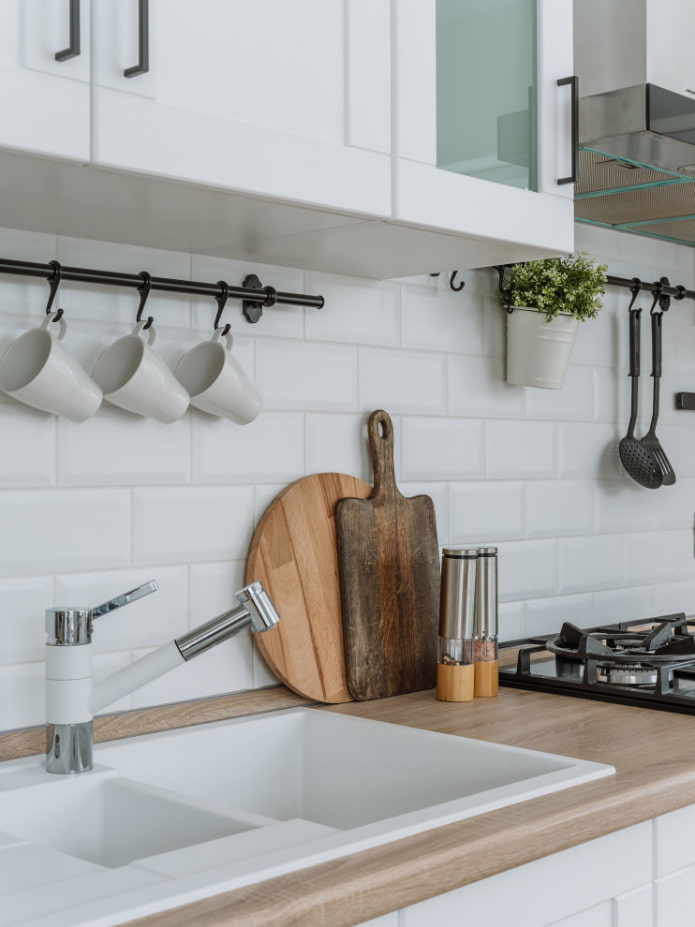
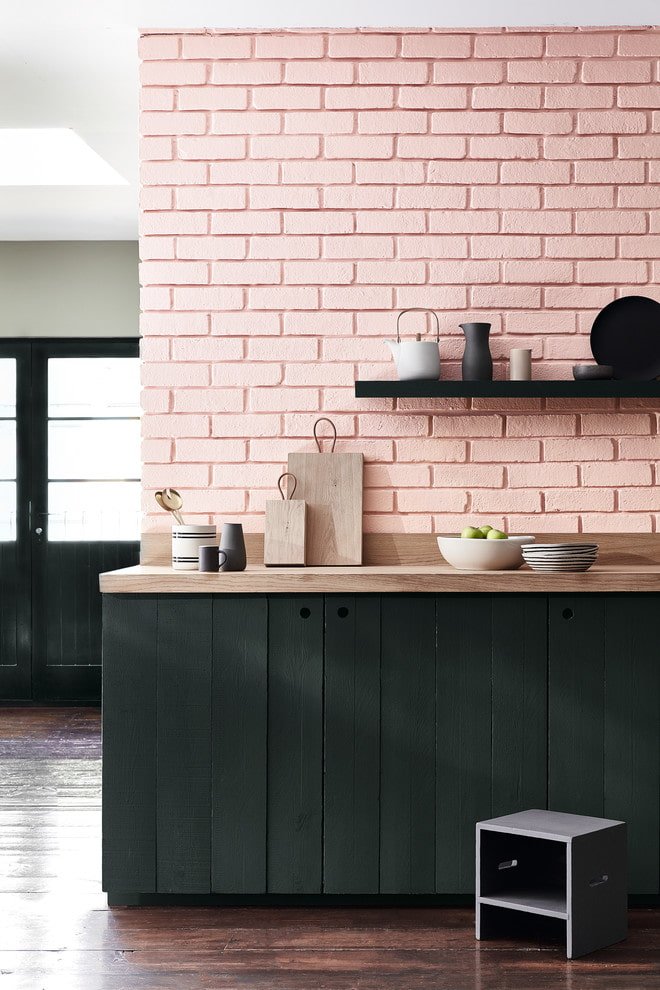
Sealant or grout
This option looks extremely simple and expensive, does not attract attention, but requires painstaking work. The tiles are laid on a perfectly flat wall after installing the kitchen unit and countertop, which is closely adjacent to the apron. With this solution, the tiles must be selected before ordering the kitchen, and the builders will “adjust” the elements to the height of the apron.
The thickness of the tiles and tile adhesive will be approximately 1 cm, due to which there will be no joint.
The joint is coated with sealant or epoxy grout. The second method is much more reliable: the composition does not absorb water, so the seam will not change its color and will prevent mold.
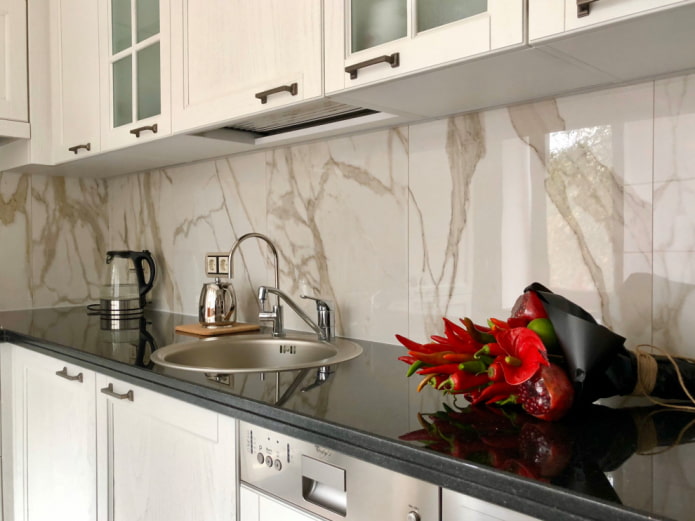
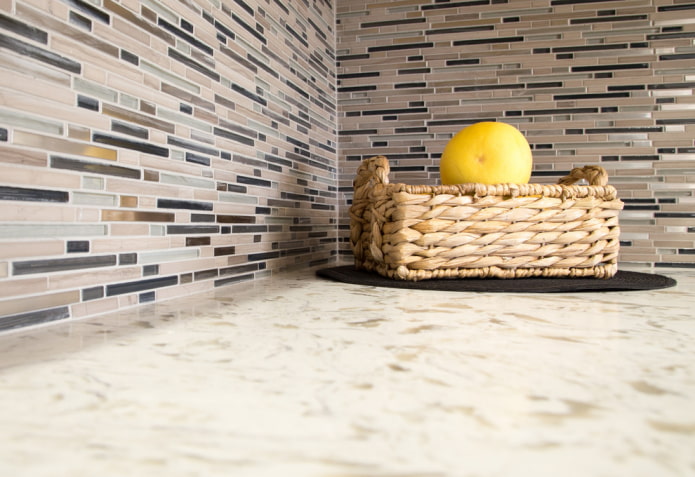
Choose the most suitable option for you to get a practical and visually attractive kitchen.
Now reading:
- Linoleum color: 60+ photos in the interior, ideas for light and dark shades
- Bathroom furniture: 34 design photos and selection tips.
- Chalet Decorating Ideas for Home, Cottage, and Apartment: 60 Inspiring Photos
- Your Go-To Guide for Pre-Owned Cadillacs
- Brown kitchen: more than 50 photos of interior solutions and design tips.